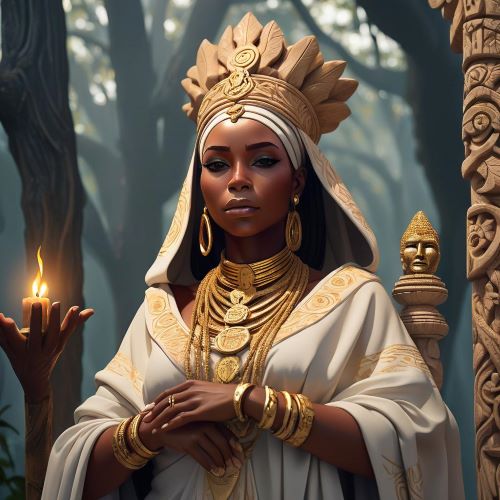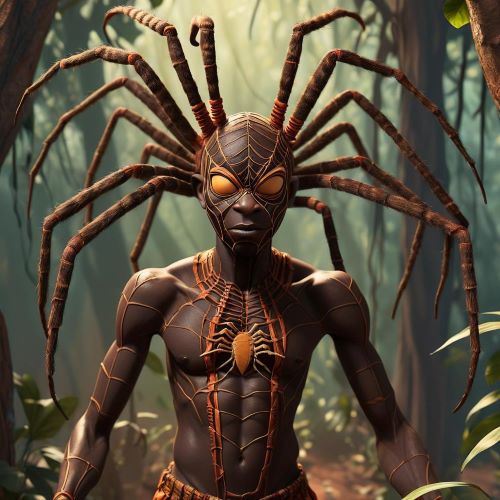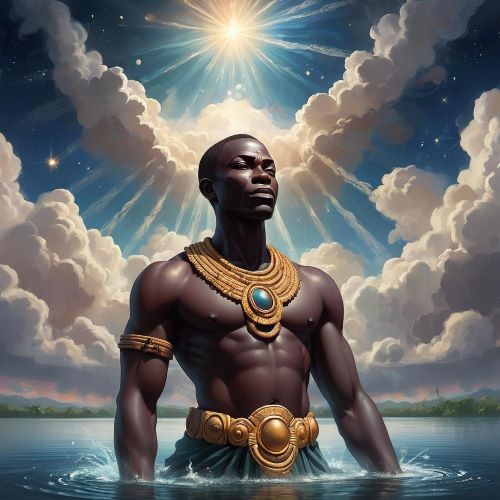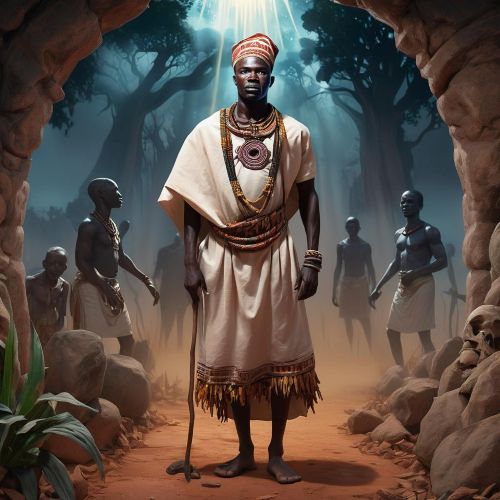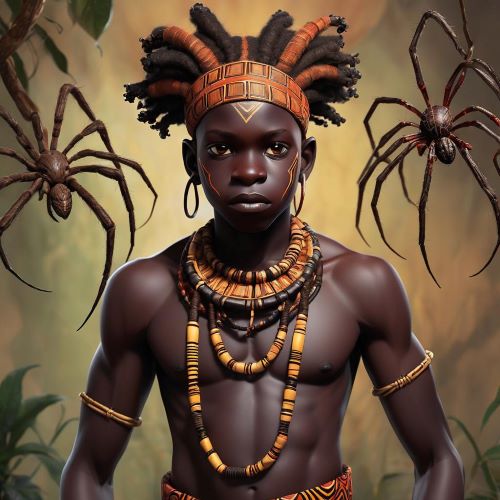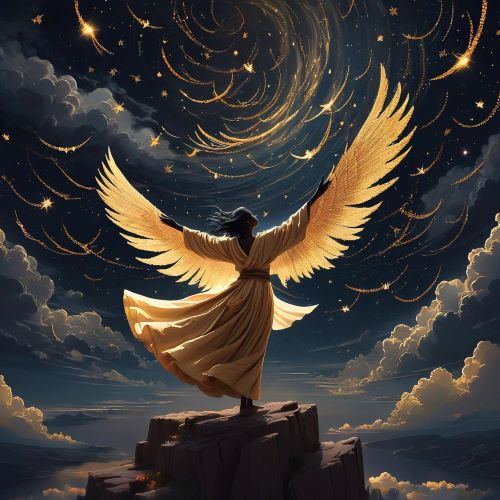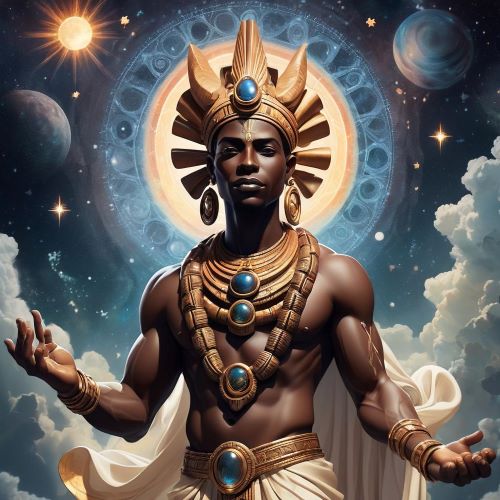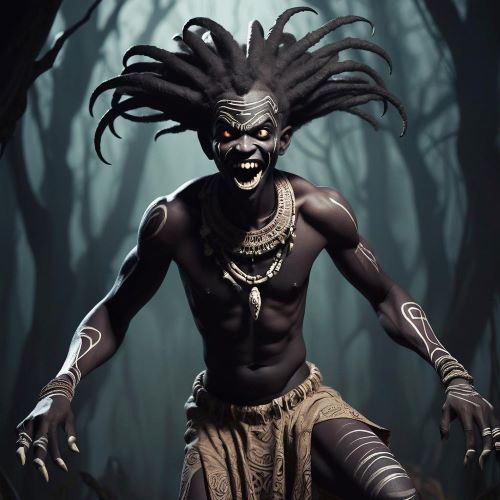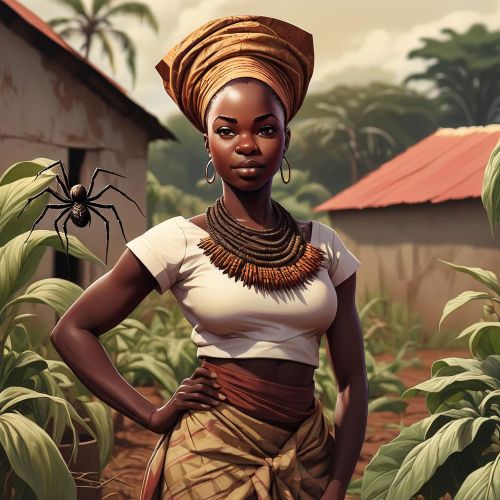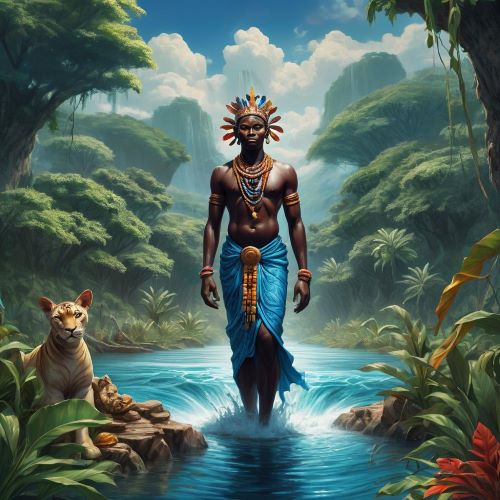Akan, Ashanti & Ga Adangbe Mythology
The mythologies of the Akan, Ashanti, and Ga-Adangbe peoples of Ghana form one of the most spiritually sophisticated and symbolically rich traditions in West Africa. Rooted in centuries of oral storytelling, ancestral worship, and cosmic philosophy, these mythologies express a profound understanding of the divine as both transcendent and immanent. They reveal a world where creation, morality, and destiny are inseparable from the natural and ancestral order — where every human action resonates across the spiritual and cosmic realms. Though distinct in language and culture, the Akan, Ashanti, and Ga-Adangbe share a unified vision: life is sacred, the ancestors are eternal, and the universe is governed by balance, wisdom, and respect.
At the center of Akan and Ashanti mythology stands Nyame, the supreme creator god, also known as Onyankopon or Nyankoton, who dwells in the sky and governs the forces of creation. Nyame is the source of all life, light, and spiritual order. The Akan believe that while Nyame created the world, he entrusted its care to lesser gods known as the Abosom, deities who personify elements of nature such as rivers, thunder, fertility, and justice. Among these are Tano, the river god of purity and strength; Bia, the god of the wilderness; and Asase Yaa, the earth goddess who nurtures all living things. The balance between Nyame’s heavenly authority and Asase Yaa’s earthly power forms the moral and spiritual foundation of Akan and Ashanti cosmology — a harmony between sky and soil, divine and mortal.
The Ashanti people, one of the most prominent Akan subgroups, developed an especially rich mythology that intertwines religion, kingship, and destiny. The Ashanti view their king, the Asantehene, as a divine representative chosen by Nyame and guided by ancestral spirits. Myths such as the story of Ananse the Spider, the trickster and cultural hero, serve as both entertainment and moral instruction. In one famous tale, Ananse brings wisdom to humanity after a daring encounter with Nyame, illustrating the value of courage, wit, and humility. These stories, told through proverbs, songs, and dance, preserve ethical lessons that continue to shape Akan and Ashanti identity today.
In contrast yet complementing these traditions, Ga-Adangbe mythology centers on the sea, ancestors, and the divine interplay between water and life. The Ga-Adangbe people of coastal Ghana revere a high creator god known as Ataa Naa Nyonmo, who governs both sky and ocean, and a host of spiritual beings associated with rivers, wind, and fertility. The ancestors play a vital role as intermediaries who guide and protect their descendants. Rituals and festivals, such as Homowo, honor these spirits through drumming, dancing, and offerings to ensure prosperity and harmony. For the Ga-Adangbe, the ocean itself is sacred — a living boundary between the human and divine worlds.
Together, Akan, Ashanti, and Ga-Adangbe mythology embody the spiritual heart of Ghana. They teach that divinity flows through all of nature, that ancestors remain forever present, and that balance — between humanity, the earth, and the heavens — sustains life. Even in the modern age, these myths continue to inspire art, music, and ritual, preserving the timeless truth that to live in harmony with creation is to live in harmony with the divine.


